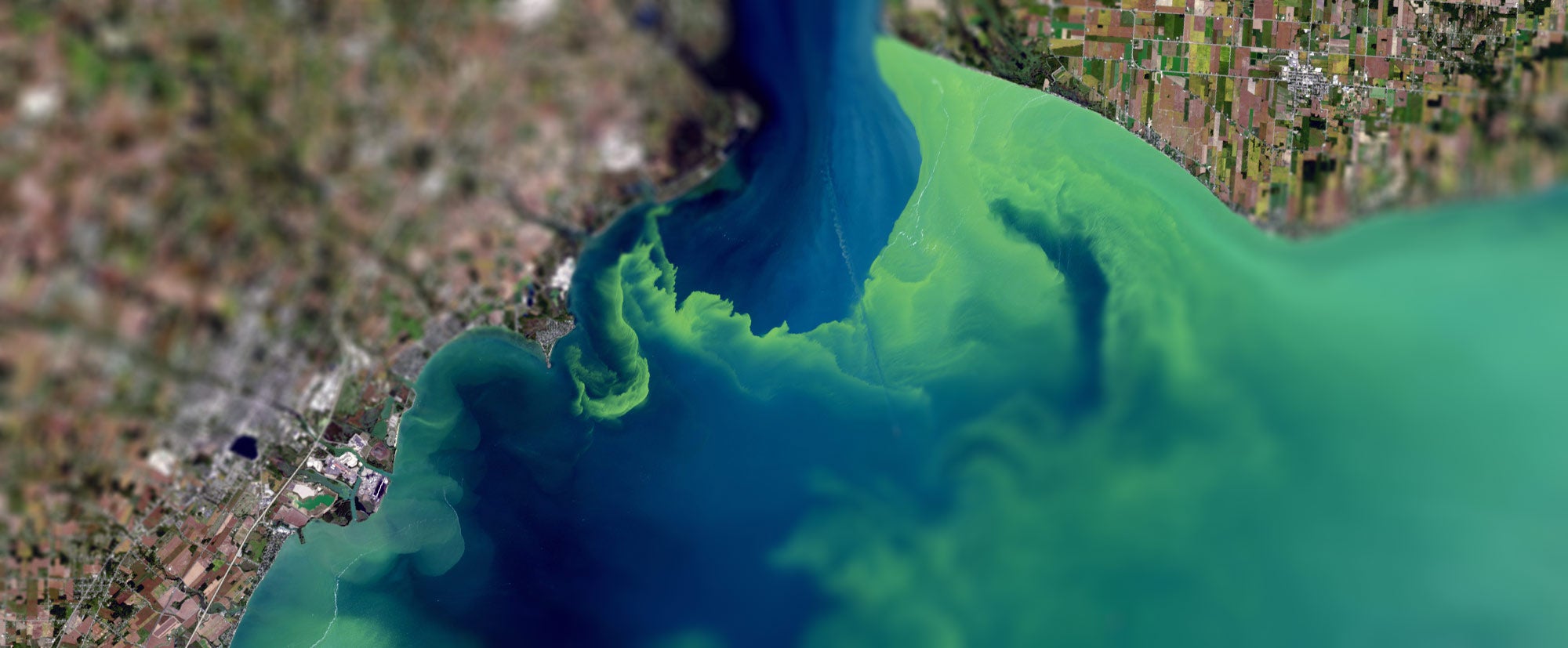Climate conditions caused ‘unexpected’ changes in more than a third of 24,000 US lakes
Rising temperatures and nutrient pollution allows for the growth of algal blooms that can impact drinking water and kill wildlife

Climate change is fueling dangerous algae blooms - which cost millions and close popular beaches - at thousands of lakes across the U.S., researcher say.
Researchers at Michigan State University who have surveyed 24,000 of the more than 3 million lakes across the country say they have discovered key climate patterns in bloom changes and now have a better understand on what drives an explosion in algae blooms.
An algae bloom is an explosion in growth for the toxin-producing bacteria. It can kill sea creatures and lead to health problems in humans. Blooms will often turn the water an unusual color or wash up the deceased creatures, forcing health agencies to close beaches or swimming to humans.
“Our research demonstrates that the relationship between climate change and algal biomass is more complex than previously understood,” said Patricia Soranno, a professor at the school’s College of Natural Science, said in a statement. “While climate change is a significant driver, we found that the impacts are not always gradual or predictable. To effectively manage and protect lakes, we need to study these effects in many different local and regional contexts.”

Soranno is one of the lead authors of the research which was published the journal Proceedings of the National Academy of Sciences.
The researchers said their findings help to understand why some lakes are more vulnerable to blooms.
Looking at freshwater lakes and using data from government resources and satellite remote sensing, they found that climate interacts with human activities such as agriculture and urban runoff, sending excess nutrients into the water that cause algae blooms.
All 50 states are impacted by nutrient pollution with about 15,000 bodies of water facing nutrient-related problems, according to NOAA.

It causes an overgrowth of algae that consumes oxygen from underwater and blocks sunlight. That makes the environment inhospitable for creatures and lead to massive fish kills. Exposure to algae blooms can also sicken humans.
Only 13 percent of lakes with climate-related changes were prone to sudden and long-lasting changes in the function of their ecosystem, and only 4 percent increased the rate in which algae produces its biomass.
Previous studies on the impact of climate change and blooms on U.S. lakes had been much smaller. Data from the U.S. Geological Survey found that roughly a third of all lakes contained toxins produced by algal blooms, and a study from the University of Kansas showed climate change forecasts show a northward shift in areas that will be at higher risk for algal blooms in coming decades. That’s something Maine scientists have said they’re already seeing.
"There are about 30 lakes in the state that routinely support algae blooms," state lake biologist Linda Bacon told News Center Maine last August. "Over the last 10 or so years, a few new ones have popped up, and we attribute those new bloomers for the most part to climate change."
Join our commenting forum
Join thought-provoking conversations, follow other Independent readers and see their replies
Comments